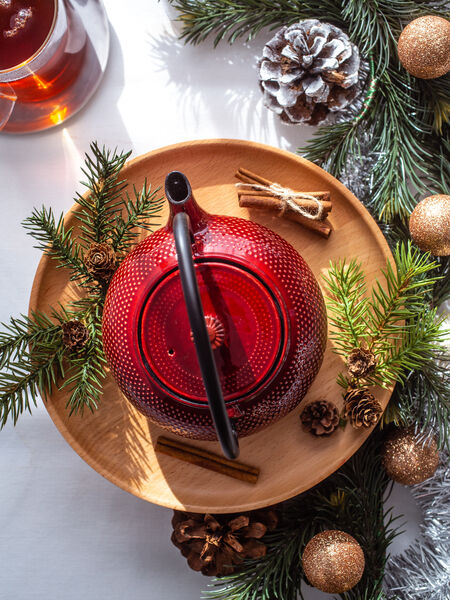Beginner's Guide: Cast Iron, Pt 2: Cleaning

Check out the first part of our Beginner's Guide to Cast Iron Teapots here!
How to Clean Glazed or Unglazed Iron Pots
Cast iron and glazed teapots are a joy to use. They last for generations, especially when good care is applied regularly, and they do what few ceramic or clay pots can do, they keep water or tea hot for a long time, up to one or two hours, without the need to reheat the water, a great boon when socializing with friends or family.
A cast iron pot has two uses: to hold hot water or to brew tea. If you love the look of a large pot, consider that one for keeping water hot for subsequent infusions without the need to boil water each time you want to re-infuse the leaves. Smaller pots are more manageable for brewing when you need to lift and lower the pot frequently to serve you and your guests tea.
To keep your pots pristine, follow these simple steps each and every time you use the pot.
Cast Iron Teapot Cleaning Directions:
- Allow teapot to cool completely after each use before cleaning.
- Clean the pot after each use.
- Remove all residual tea leaves and brewed liquor.
-Rinse the interior of the pot completely at least twice with fresh clean water.
- Wipe dry both sides of the lid. Wipe dry the spout and the pot (inside and out) thoroughly with a clean, soft cloth. Then, under a good light, check to make sure every drop of moisture is gone. This is how to avoid rust. Use a second cloth if the first one is too saturated with water, otherwise, you’ll be returning the moisture to the pot.
- For added assurance, invert pot and lid to air dry before replacing infuser and lid. This is especially important if the spout is difficult to dry. Never clean cast iron or glazed iron pots with soap as it’s possible for the soap’s oily residue to taint the pot and spoil your next cup of tea.
Should Rust Occur
Unlike a cooking utensil made of cast iron, it is not necessary to season a cast iron teapot as no foods will be heated in it that could possible stick to any unglazed area. However, like cast iron pans, iron teapots can draw rust if moisture remains after using. Rust is not harmful, but it can be aesthetically unpleasing, although some tea lovers prefer the taste of tea from a rusted iron teapot.
If only a small amount of rust is on the pot, clean it off with a soft brush. Then, fill the pot with spent tea leaves and boiling water and allow the infusion to sit for 20 minutes. Discard all the contents from the pot and rinse thoroughly, then dry as noted in the above cleaning directions.
Abandoned a damp iron teapot for too long? No need to toss it. First, use a 50-50 solution of water and vinegar to wash away the rust, using a brush for the most severely rusted spots. Baking soda can be added if you’re not satisfied with the results.
If these methods fail, combine a small amount of olive oil with fine salt for an abrasive. GENTLY rub it on the rusted areas, then rinse the abrasive out with clean water. Next, fill the pot with boiling water and spent tea leaves and allow to sit for 20 minutes. Clean as usual.
Occasionally, you’ll see a blue-black compound. That is ferric tannate which is a reaction of water to tea’s tannin. It is harmless and does not need to be removed.
Lime scale buildup from repeatedly using boiling water will keep rust at bay on an iron pot. Should you want to rid the pot of lime scale, a teaspoon of powdered citric acid (found where canning supplies are) and damp cloth can wipe it away easily. Follow the cleaning steps as usual before using the pot.
NOTE: Remember, boiling water and tea leaves are make a natural, protective barrier to deter further rusting, so use your pot frequently!
